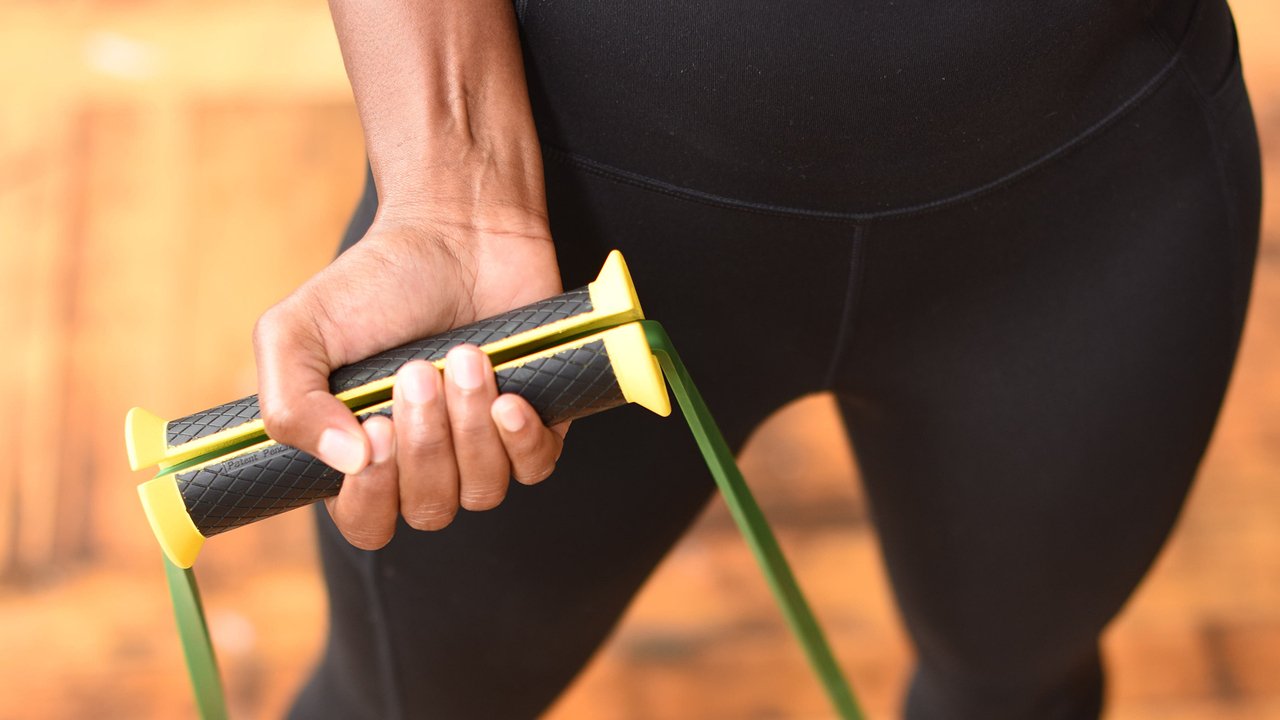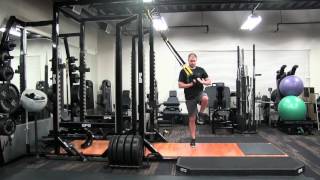So you want to invest in a home gym. You've even found the right apps for in-home coaching. Now you have to decide what kind of equipment to buy. There are two limiting factors in outfitting a workout area in your house or apartment—space and budget—but with proper planning, you can design an exercise studio perfectly tailored to your needs. Simply start with the essentials, and then branch out to more specialized equipment.
The Essentials
The most basic items you’ll need are a mat and bands. There are hundreds of bodyweight exercises that don’t require any specialized equipment, but it helps to place an exercise mat on the floor to make those moves more comfortable. (Anyone who has ever tried bicycle crunches on a tile floor can relate.) If you’re starting with just one piece and a limited budget, buy yourself a good mat. You can use a yoga mat if you already own one, but a more dense foam will be provide greater protection for your knees, feet, and lower back. You should be able to find a quality mat for less than $30.
If you’re still unsure about making a larger investment in exercise tools, your next purchase should be bands. They’re inexpensive, easy to store, and you can use them to increase the level of difficulty for many of your bodyweight moves. For example, you can challenge your adductors by adding a resistance band around your ankles when you do jumping jacks. It’s the same exercise you’ve been doing since you were a child, but the band increases the load on your legs. Best of all, resistance bands are inexpensive: they usually cost less than $10.
For more serious muscle-building, think about using strength bands for moves like bicep curls, shoulder presses, and donkey kicks. Even if you later add more weight-training equipment to your home gym, strength bands will be useful for anything from rehabilitation, stretching, mobility and resistance training, to power-lifting, weightlifting and pull-up assistance. You should be able to find quality strength bands for around $15-$40 each, depending on what level of resistance they provide. (Heavier bands tend to be pricier.)

When you’re ready to spend a little more money, the TRX Home2 System is one of the best purchases you can make for your home gym. It includes the latest TRX Suspension Trainer for homes, as well access to the TRX app. (With more than 80 workouts designed by world-class trainers, the app will keep you busy.) While the Home2 System costs less than $200, it is one of the bigger purchases on this list. What makes it worthwhile is that Suspension Training offers a full-body workout that can be modified for any fitness level. You and your partner or roommate may need different dumbbells, but you can both use the same Suspension Trainer for a challenging workout. It’s easy to use, you can set it up on any hinged door, and you can store it in a pouch when you’re finished. You can even take it outside if you want to exercise in the sun.
Once you have bands and a Suspension Trainer, the next logical purchase is weight, like a medicine ball or kettlebell. There are a number of ways that you can use these two interchangeably: both work when you want to increase your load on a sit-up, oblique twist, or squat.
That said, they aren’t interchangeable tools. For example, you can throw a medicine ball at a wall for a wall ball exercise, but you would probably punch a hole in the wall if you tried throwing a kettlebell. You can use a kettlebell for a shoulder press or deadlift, but it would be hard to execute the same move using a bulky medicine ball. Also, kettlebells top out at heavier weights than medicine balls. If you’re new to weight-training, think about starting with a medicine ball (generally starting around $75), and later adding kettlebells (starting around $30) to your home gym.
Specialized Tools
After resistance and weight tools, the final component of a basic home gym is cardio equipment. These are typically the larger, most expensive purchases, so they’re not right for every space. The most common cardio machines for homes are treadmills, stationary bikes, elliptical machines, and rowers; each of those comes in a wide array of sizes and price points. The average cost for a treadmill, for example, is $3,000, though there are well-reviewed models for less than $1,000.
Before you splurge on expensive cardio equipment, think about what type of cardio you enjoy, and where you like to do cardio. Let’s use cycling as an example. If you own a bike, you live in a moderate climate (like Southern California or one of the southeastern states), and you love riding outdoors, year-round outdoor cycling might be your best option. If you love cycling, but you live in Michigan, the winters will pose an obstacle to your weekend rides in January. That difference in lifestyle could be the deciding factor on whether or not you want to purchase a stationary bike.
Another point to consider is if, or how, you can use the equipment you already have. To expand on the cycling example, if you own a road bike, you might want to purchase an indoor bike trainer for your existing bike instead of an all-new stationary bike. If you have your own bike and a trainer, you could even use an app like Zwift to turn your workout into an immersive game experience. On the other hand, if you don’t own a bike, but you love indoor cycling classes, you might prefer a Peloton bike, with a live class subscription service.
Just like fitness, home gyms should be personal. The expensive machine that was right for your co-worker or your neighbor may not be the best choice for you. When you’re ready to shop for your own workout space, start with equipment like bands, a mat, medicine balls, kettlebells, and—of course—the TRX Suspension Trainer. Once you’ve covered these five essential categories, you can gradually build into the big ticket purchases. Taking a methodical approach to the buying fitness equipment will help you save money and maximize the potential for your home gym.



